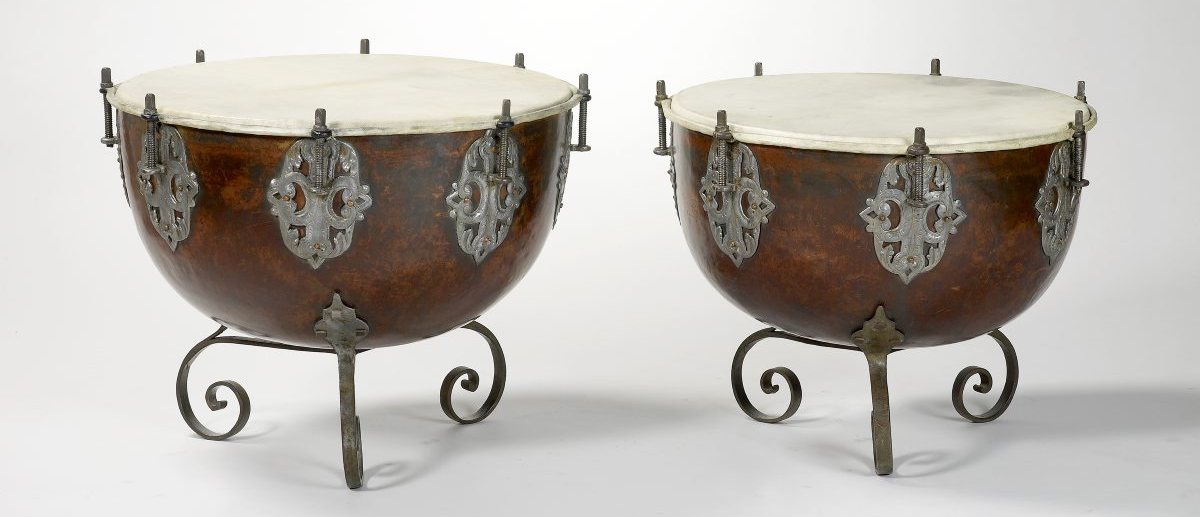Timpani
The timpani (or Kettle Drum) is a percussion instrument with a defined pitch, in other words it produces a musical tone. The base is round and it has a stretched membrane that can be adjusted by keys.
How does it work?
The timpani is beaten with mallets. The change in the tension of the membrane modifies the pitch of the note produced.
A bit of history...
Prototypes of the timpani were used by ancient civilizations in Asia, The Mediterranean and by African tribes and Native Americans. It was introduced in Europe in the beginning of the 6th Century and because it was a loud sounding instrument it was used a lot in military bands and in instrumental arrangements for outside environments.
The oldest record of the use of the timpani in Rio de Janeiro is from the 18th century, in 1786, in the parade that took place in this city in commemoration of the wedding of the youngsters Don João VI and Dona Carlota Joaquina.
|
In the 19th century the timpani were integrated into the orchestras of Rio de Janeiro. In 1811 Father José Maurício Nunes Garcia composed the Thanksgiving Hymn in C Major for chorus and orchestra which in 1814 the composer dedicated to the anniversary of the arrival of the Portuguese Court in the city. The score clearly showed the use of the timpani in the orchestra of the time. |
|
Nowadays the timpani are usually only seen in symphonic orchestras such as The Brazilian Symphonic Orchestra based in Rio de Janeiro. The instruments are made of different materials from those found in the 18th and 19th centuries. Like most modern instruments today they are made of metal and plastic.
Watch the video below and learn more about the timpani!

